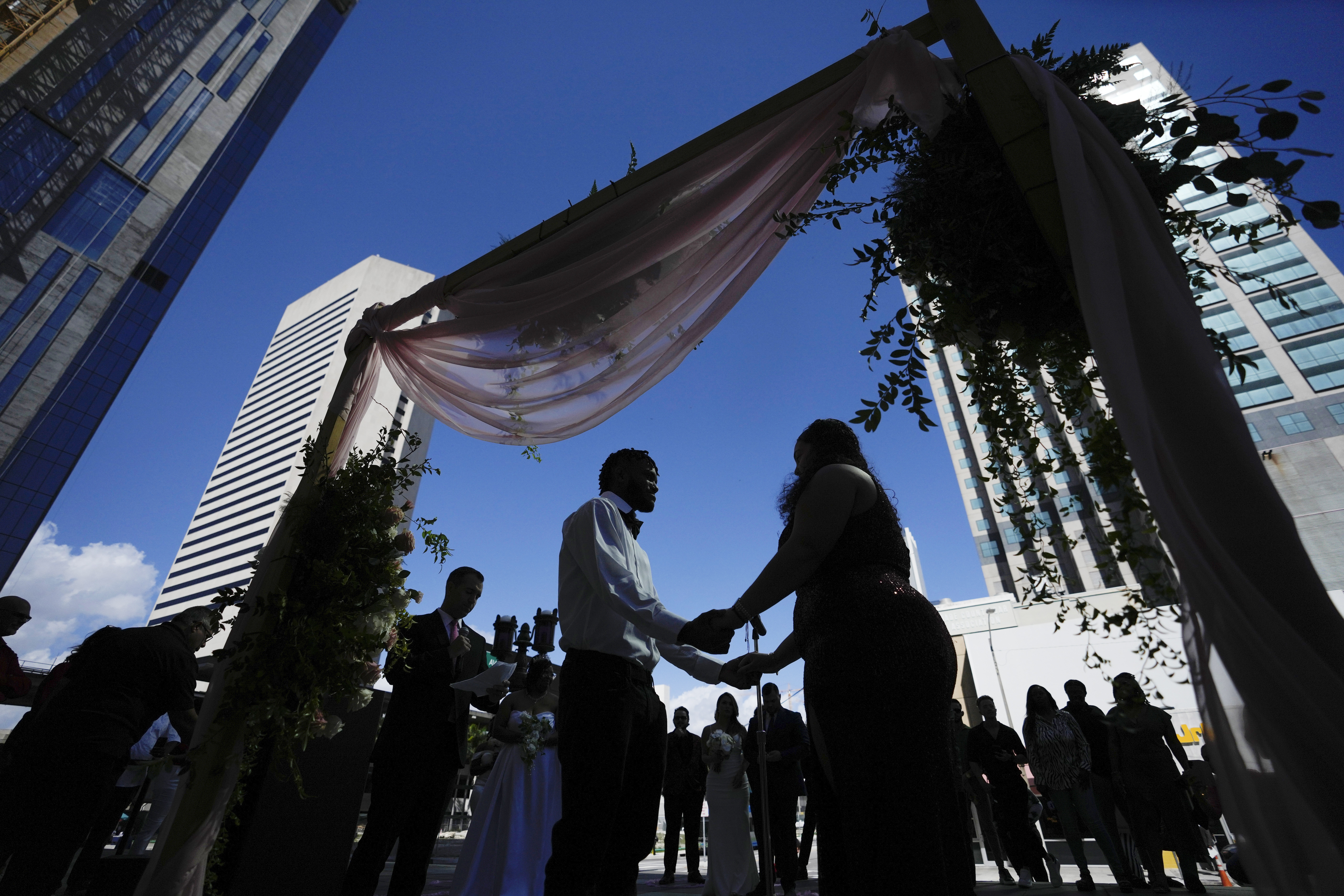The letter got here from the state division of human providers in July 2021. It expressed condolences for the lack of the recipient’s mom, who had died a couple of weeks earlier at 88.
Then it defined that the deceased had incurred a Medicaid debt of greater than $77,000 and offered directions on the way to repay the cash. “I used to be surprised,” stated the girl’s 62-year-old daughter.
At first, she thought the letter is perhaps some kind of rip-off. It wasn’t.
She requested to not be recognized, as a result of the case is unresolved and he or she doesn’t wish to jeopardize her possibilities of getting the invoice diminished. The New York Instances has reviewed documentation substantiating her account.
The daughter moved into the household’s Midwestern dwelling years earlier, when her widowed mom, who had vascular dementia, started to wish help.
Her mom was effectively insured, with Medicare, a personal supplemental “Medigap” coverage and long-term care insurance coverage. The one purpose she enrolled in Medicaid was that she had signed up for a state program that allowed her daughter to obtain modest funds for caregiving.
However that triggered extra month-to-month expenses via a Medicaid managed care group, and now the state needs that cash again.
The follow dates to 1993, when Congress mandated that when Medicaid beneficiaries over age 55 have used long-term providers, akin to nursing properties or dwelling care, states should attempt to get well these bills from the beneficiaries’ estates after their deaths.
“Medicaid requires beneficiaries to spend down nearly all their belongings” to qualify for advantages, defined Eric Carlson, a directing legal professional at Justice in Ageing.
Most states enable these eligible for Medicaid to retain belongings value solely $2,000. But when a beneficiary owns a house, it may be exempt.
Nonetheless, if Medicaid has paid for long-term care and there’s cash available after demise, state companies will come for the belongings.
“If there’s going to be tens of 1000’s of {dollars} out there for restoration, usually, it’s the home,” Mr. Carlson stated. Surviving members of the family might should promote the home to repay Medicaid, because the Midwestern daughter could also be pressured to do, or the state might seize the property.
Medicaid “is the one public profit program from the USA of America that requires states to hunt to get a reimbursement,” stated Consultant Jan Schakowsky, Democrat of Illinois. This month she reintroduced a invoice, the Cease Unfair Medicaid Recoveries Act, to finish the follow.
Her workers has calculated that 17,000 households in Illinois alone have misplaced properties to Medicaid restoration since 2021. Comparable nationwide figures aren’t out there, however an impartial company that advises the federal authorities and states on Medicaid points reported in 2021 that states collected $733 million via property restoration within the fiscal yr of 2019.
That quantities to solely about one half of a % of Medicaid’s long-term-care expenditures, in accordance with the company, MACPAC, the Medicaid and CHIP Fee and Entry Fee. Solely eight states collected greater than 1 % of expenditures.
“It is a actually dangerous and merciless program,” Ms. Schakowsky stated. “And it’s not working. The price of truly attempting to get the cash might exceed any cash that will be returned.”
When Congress established the mandate, proponents argued that property restoration would lower your expenses and promote equity, since some higher-income seniors employed legal professionals to assist protect their belongings in order that Medicaid would pay their nursing dwelling payments.
However for essentially the most half, the states pursue claims in opposition to low-income households, lots of them Black and Hispanic. Critics argue that the coverage perpetuates poverty. The common wealth of deceased Medicaid recipients over age 65 is lower than $45,000, the MACPAC report famous, and the typical dwelling fairness is $27,364.
“For lots of those folks, the house is a product of a lifetime’s value of working and scrimping,” Mr. Carlson stated. “It may very well be a basis for his or her kids and grandchildren. That’s pulled away from the household beneath these claims. It imposes restoration in opposition to the households and communities least in a position to pay it.”
(A surviving partner or minor or disabled baby can proceed to dwell in the home after a Medicaid beneficiary dies, however after the survivors die, or after a baby turns 21, property restoration can proceed.)
Each state affords hardship waivers that cut back claims, however “the method tends to be troublesome or futile,” Mr. Carlson stated. “Relying on the state, the request is nearly at all times unsuccessful.”
“I don’t suppose property restoration was a coverage created primarily to influence low-income households, however that’s the influence it’s having,” stated Natalie Kean, one other directing legal professional at Justice in Ageing.
Property restoration can even have an effect on middle-class households, nevertheless. Many flip to Medicaid as a result of, given the price of nursing properties (the median value final yr was $8,669 a month), “your financial savings can disappear in a rush,” Mr. Carlson stated.
Brian Snell, an elder regulation legal professional in Marblehead, Mass., represents a household whose 93-year-old mom, who had dementia, died in 2022 at her condominium in North Andover. Her daughter had reduce on her hours as a beautician to take care of her at dwelling, wanting to maintain her out of a nursing dwelling as a result of “that was her mom’s want,” Mr. Snell stated.
When the mom certified for MassHealth, the state Medicaid program, it enrolled her in a state dwelling care program that offered dwelling well being aides (although solely sporadically, as a result of the pandemic made employees and companies hesitant to enter properties).
After her demise, MassHealth sought to get well $292,000 for the price of dwelling care and this system premiums. As a result of two of her kids had been low-income, together with the caregiving daughter, a state waiver would enable these two to obtain $50,000 every from the sale of the mom’s condominium. However greater than half of the $335,000 gross sales value will go to the state and federal governments.
The prospect of such clawbacks prevents some low-income older adults from receiving essential care, even when they’re eligible.
“It’s not unusual for folks to easily decline to use for Medicaid providers as soon as they study in regards to the restoration program,” stated Matthew Portwood, an consumption supervisor on the Atlanta Regional Fee, which serves because the native company on getting old, in an e mail. “Our counselors encounter this nearly every day.”
Some states are working to scale back the monetary hit on low-income households. Massachusetts, Georgia, South Carolina and Illinois, for example, won’t pursue restoration in opposition to estates valued under $25,000. Some states now present candidates with fuller explanations of the results of signing up.
California permits hardship waivers for a “homestead of modest worth,” outlined as a market worth of as much as half the typical value of properties within the county. MACPAC beneficial amending federal regulation to permit states to make restoration elective.
Consultant Schakowsky’s invoice goes past that to ban Medicaid property restoration altogether. “It’s only a horrible thought,” she stated.
Her invoice faces an uphill battle within the Republican-controlled Home — all its 13 co-sponsors to this point are Democrats — and it went nowhere when she launched it final session. However the congresswoman stays optimistic: Folks in purple states want long-term care, too.
Again within the Midwest, the daughter who was billed $77,000 nonetheless hopes to stay within the two-story home the place she grew up, the place her mom lived for greater than 60 years and the place “there’s a reminiscence in each nook.” Now she is in search of a lawyer. “I’ve to struggle this,” she stated.









.jpg)













